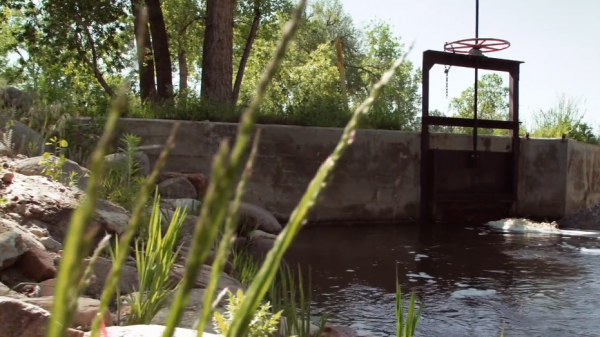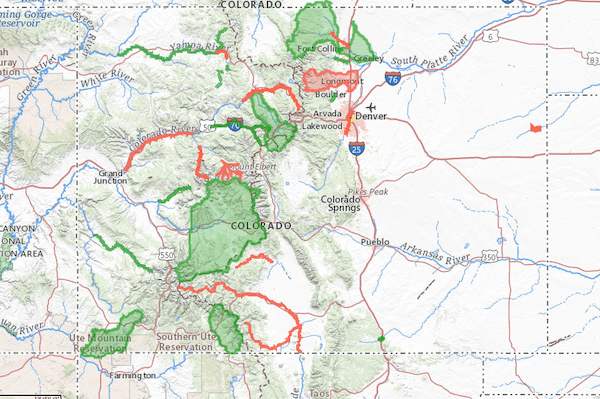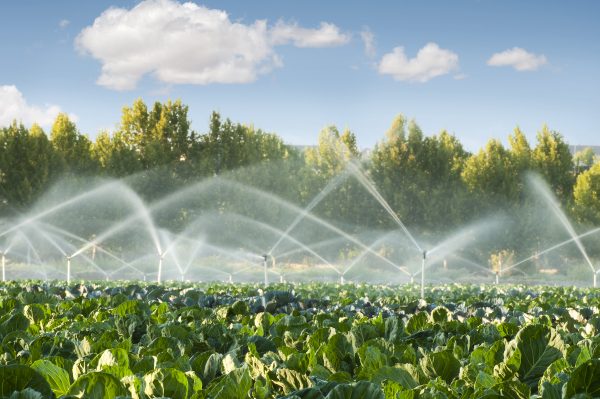Healthy Rivers in Agricultural Landscapes
Farms, ranches and rangelands occupy 44% of U.S. land, consume 80% of available water supply, and contribute to pollution of our waterways. River Network sees a huge need and opportunity to build partnerships with farmers and ranchers to improve the health of rivers, including those who have been excluded from financial and other opportunities due to race, ethnicity, and gender. View our 2022-2025 plan Defining River Network’s Path Forward on Healthy Rivers in Agricultural Landscapes.
Below, learn about River Network’s work related to the intersection of water and agriculture, and connect with our staff working on these topics.
In Colorado, River Network is at the forefront of working in rural communities to advance initiatives to protect and improve rivers. Our work supporting Stream Management Planning has launched community-led projects in almost a dozen locations to conduct data-driven assessments of river health that prioritize protecting or enhancing watersheds’ environmental and recreational assets. Since 2017, local coalitions have received almost $8 million in new funding to understand the condition of their rivers and pursue ideas to protect and restore them for the future generations.
Read the latest from our staff and partners on our agriculture work and what’s happening across the network:
- What does the Farm Bill have to do with Water Conservation? by Erin Kanzig
- Aligning with Agriculture for Multiple Benefits on All 300+ Miles of the Yampa, by Nicole Seltzer
- Listening to the Network for Healthy Rivers in Agricultural Landscapes, by Mikhaela Mullins
Involving Agriculture in River Health in Colorado
Sharing Success Stories in Partnership with Colorado Ag Water Alliance
Much of River Network’s coalition building in Colorado is done in partnership with Conservation Districts or other agriculture-focused organizations. We are bringing them into a conversation about environmental flows, fish habitat, and riverside land protection, often for the first time. In this video, we profile our work building capacity within agriculture organizations as they explore their roles in protecting and restoring rivers.

River Network and the Colorado Ag Water Alliance teamed up for a series of videos, profiling projects that are a win-win for both agriculture and river health, from ditch restoration to post-flood rebuilding.
Telling the story that productive agricultural lands can exist side by side with healthy rivers is critical to overcoming historic us-versus-them thinking.
What We’re Working On Now
- Defining River Network’s Path Forward on Agriculture: In 2020 we invited members of our network to share how they currently work with farmers and ranchers and what their challenges and needs are. Now, we’re building from these findings to help us define our niche and determine how to best bring value to the network. Watch this recording from River Rally 2021 to learn more or download our plan here.
- Expanding Access to Irrigation Improvement Projects: We secured funding to hire, and are now working with, new positions placed in agriculture organizations in two river basins in northwest and southwest Colorado. These new positions will help move irrigation improvement projects from good ideas to practical successes. Learn about how the work is moving forward.
- Leading the Stream Management Plan Peer Learning Network: This group brings together SMP practitioners and supporting organizations, providing an interactive space for ongoing exchange of information, collective problem solving, and development of innovative approaches to best accomplish SMP goals.
- Engaging in Policy Solutions: Every five years, the Farm Bill comes up for reauthorization and we work with partners like the Clean Water for All Coalition and the National Sustainable Agriculture Coalition to advocate for healthy waters as part of this critical and wide-ranging legislation. 2023 is a Farm Bill year! Learn about Clean Water for All’s legislative priorities here.
- Developing Resources to Leverage Funding Sources: There’s a wide variety of federal sources for agricultural conservation related to water, and we’ve started to learn more ourselves and share out some basics on what these sources are for and who is eligible to receive this funding.







